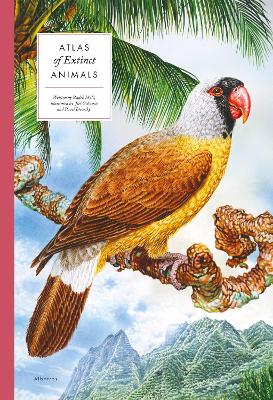Reviewed by annieb123 on
Atlas of Extinct Animals is a colorful and sobering nonfiction look at animal species which have become extinct as a result of human activity. Originally released in Czech in 2019 this English language edition is due out 29th March 2021 from Albatross. It's fully illustrated in color, 88 pages and will be available in hardcover format.
There are 41 species included here: from the auroch (ca. 1627) to the Zanzibar leopard (1996). Each of the entries contains name and zoological (Latin) nomenclature, date of extinction where known, range, habitat, and other information about how and why they disappeared. The species detailed include the expected long distant mammoth which elicit a pang of regret, through to vividly gut-punch immediate sadness over recently departed species such as the Pyrenean ibex (2000) and river dolphin (2007).
I remember many of these animals from Mark Cawardine and Douglas Adams' sobering Last Chance to See, and it's just awful that so many of them are now, sadly, not just going, but gone.
Five stars. The illustrations are detailed and very well rendered and they add a lot to the book. This would be a good selection for public or school library or for any young reader aged ca 9-12 years.
Disclosure: I received an ARC at no cost from the author/publisher for review purposes.
Reading updates
- Started reading
- 11 March, 2022: Finished reading
- 11 March, 2022: Reviewed
